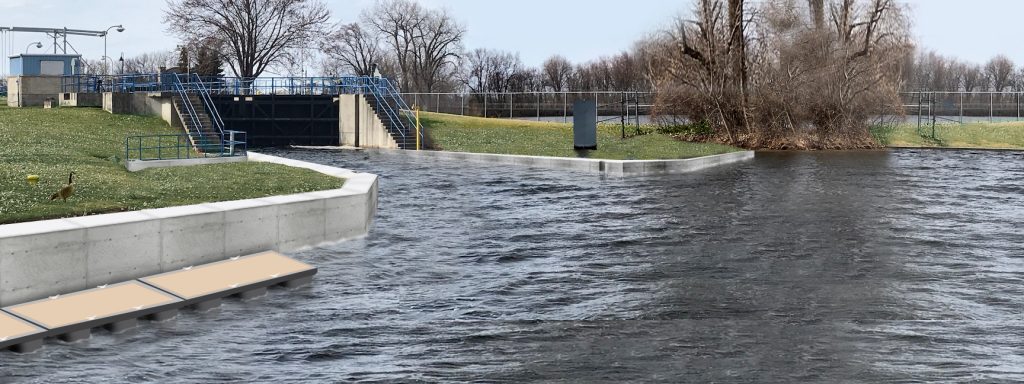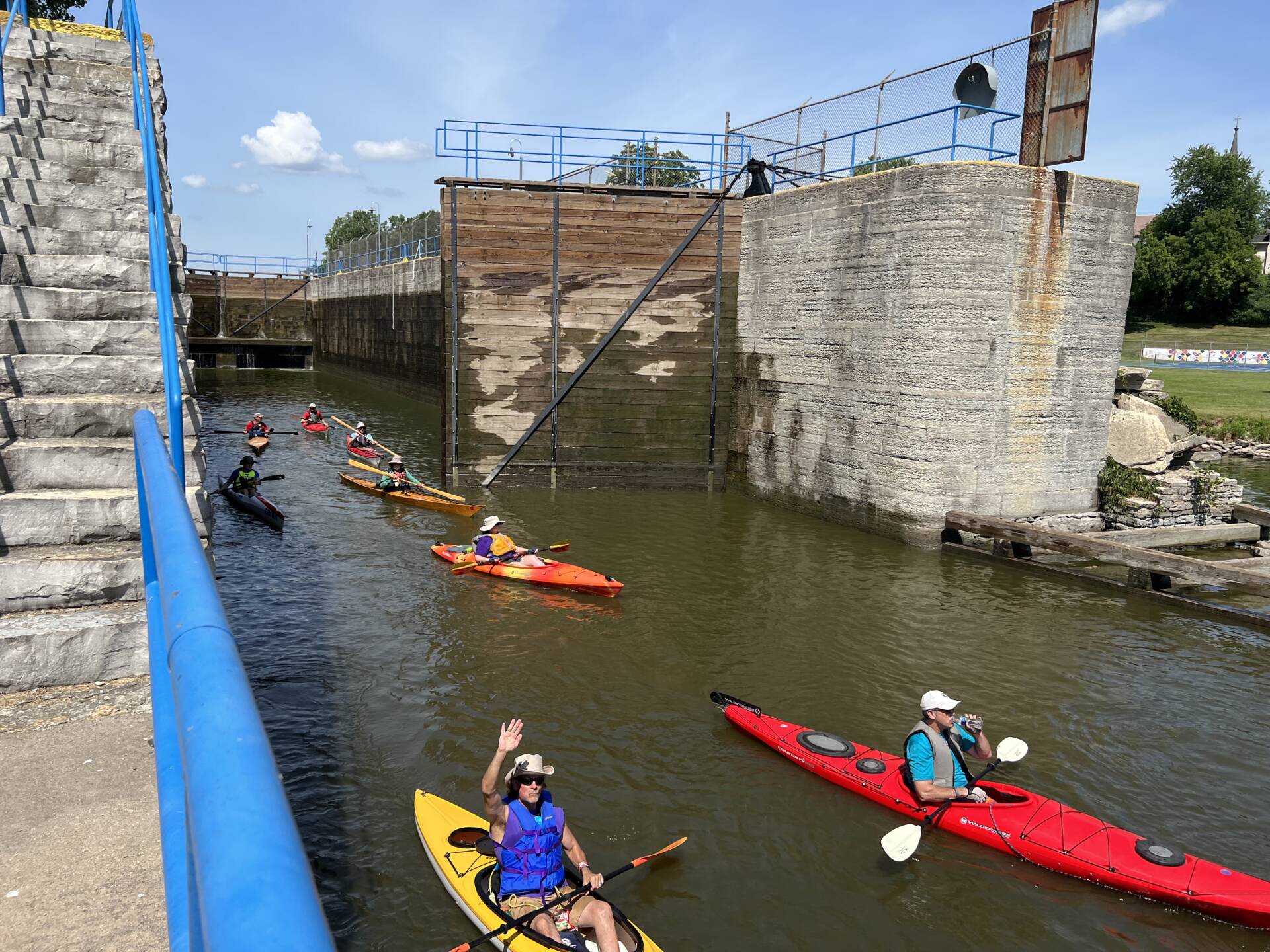(KAUKAUNA, Wis.) April 30, 2019—The Fox River Navigational System Authority (FRNSA) submitted a proposal to reopen the Menasha lock to the Wisconsin Department of Natural Resources (DNR). The plan calls for constructing an electric barrier and water velocity system at the Menasha lock to prevent the spread of invasive species into the Lake Winnebago watershed. The plan has been developed with fish researchers, input from the U.S. Geological Survey (USGS), and input from an independent fisheries management firm.
The proposal calls for building a 100-foot long concrete channel, 36 feet wide with vertical walls approximately 13 feet high (2’ will be visible above the waterline). Electrodes will be recessed in the concrete to create a pulsed DC electrical field. The plan calls for installing a generatorto use as a back up for the system. The system also uses changes in water velocity when the locks are opened to flush the lock channel thus clearing out any invasive species that may be present in the channel. A portion of the riverbank on each side of the channel will be filled in to support the concrete channel. This type of a barrier is not dangerous to humans and will allow boat traffic to safely proceed through the channel while preventing the migration of fish.
This plan is the result of months of scientific study specific to the Fox River and the round goby. It uses the most current technology to effectively prevent invasive species from migrating while giving boaters safe, recreational access to the river through the lock system. The Menasha lock has been closed since September of 2015, when the Wisconsin DNR asked FRNSA to close the lock to prevent the spread of the round goby.
FRNSA is working with Smith-Root, one of the nation’s leaders in aquaticecosystem management, researchers from the U.S. Geological Survey (USGS), and engineers from OMNNI Associates to create a plan that contains the round goby but can be expanded to prevent future invasive species. The organization’s goal has always been to find a solution to restore access to the lock system and prevent the migration of aquatic invasive species (AIS) into the Lake Winnebago watershed.
A similar barrier is currently in use at the Chicago Sanitary and Ship Canalto prevent the spread of Asian Carp into the Great Lakes. Since the installation of the first barrier in the canal in 2002, Asian Carp have not advanced their population beyond this series of barriers.
Representatives from the DNR will review the proposal and present any concerns to FRNSA.
Media inquiries, please contact Mary Schmidt at mkschmidt@centurytel.net 920.284.7165



